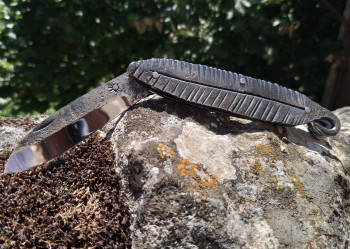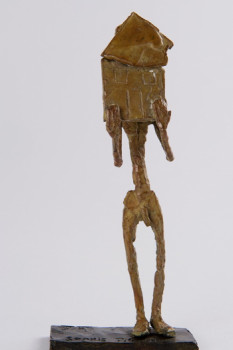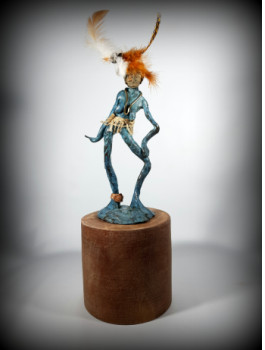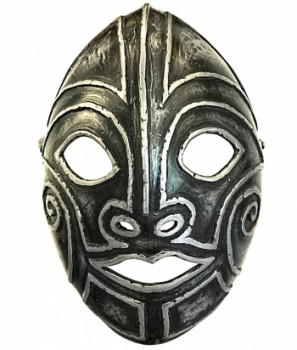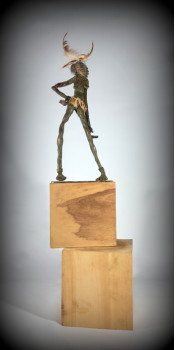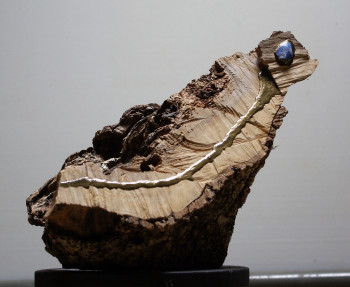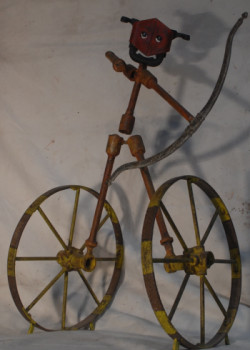
Max Ernst: dream imagery against a backdrop of trauma
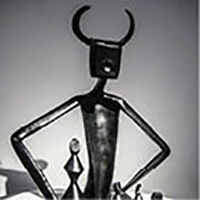
When we look at the career of painters and sculptors having had a profound impact on the history of art, a typical path seems to emerge most of the time, at least, during the first years of art. es of life and training. This is not the case of Ernst, this autodidact and informed explorer in the field of art and psychology. These two These disciplines may seem very different at first glance, but that's without counting on the talent of Max Ernst. He appropriates them to give life to fantastic creatures.
Origins
On April 2, 1891, in the town of Brühl, a unique child was born. Very early on, his personality became evident. strength develops. The young Max Ernst reveals himself to be endowed with of an imagination that seems to have no limits. Original, passionate, the child is eager for knowledge and shows great sensitivity. A few years later, this character was already evident. well-tempered, becomes more complex, to the benefit of an undeniable rebellious inclination. A bit provocative and above all, certainly unconventional, Max Ernst discovered painting alongside his father. The latter excels in this art and transmits all his knowledge to him. Together, they spend a lot of time in the forest, an inexhaustible source of inspiration for the artist father and his son. Ernst also learns the basics of drawing, at its own pace, and reaches a level of excellence that surprises the most learned. In fact, the child has unusual baggage, not having spent time in education. through traditional training.
It was time for college
As he enters adulthood, Max must choose a path for his future. He joins the university from Bonn, nurturing the project of training abroad; philosophy. In addition, he also takes art history courses. If these disciplines interest him, he doesn't stay stuck for long. between the walls of a classroom, or a lecture hall. Ernst quickly gives up. It is then that he returns to his childhood passion, painting. His career as an artist officially began during this period.
Psychology and mental illness
The arts, whether it be sculpture or painting, form the glue of young Max Ernst's life. However, new topics of reflection attract his attention. psychology fascinates him. The artist therefore takes the time to inform himself, to experiment and to understand the discipline. The failings of the human mind are particularly attractive to us. their eyes. mental illnesses became an important field of study for him. Without much surprise, but with immense talent, his first works bring together all these universes, with strong cubist, expressionist, even futurist influences. His inspiration also comes directly from artists such as:
- Vincent Van Gogh,
- Giorgio de Chirico,
- August Macke.
Works marked by the trauma of war
Going through the horrors of war was not without consequences for the artist sculptor. His paintings and sculptures mark people's minds, because of this omnipresence of painful memories. These obvious traumatic traces are added with soft, childish and almost naive forms, granting to his creations have a truly moving aspect. It is also the war which reinforces his feeling of revolt which he has nourished since childhood in the face of established conventions. He then got closer to the Dada movement.
Ernst, art critic and master of fantasy
the question: can we be at home? both judge and party? Max Ernst answers in the affirmative. During 1919, he regularly met many avant-garde artists, precisely for this purpose. Alongside them, the artist sculptor created his first collages. Thanks to this new mode of expression, Based on pieces of illustrated catalogs and science textbooks, he creates fantastic images. These latter are the reflection of a inner imaginary world dense and of great richness. They seem to come straight from the subconscious.
Experimental art
Between 1922 and 1941, Max Ernst lived abroad. Paris. His art develops, evolves and approaches the surrealist movement. Through multiple artistic experiences, Ernst wishes to explore the world of the absurd and dreams. To complete his approach, he does not hesitate to take action. employ unorthodox methods. Sometimes he uses hallucinogenic substances to bring something to life. original creations, the unreal appearance. Max also agrees to create certain works under hypnosis, thinking of burying himself even deeper in his subconscious. Her collage novels, including the famous "Woman Without Heads", are conceived during this period of ultimate experimentation.
Birds and alter ego
The means used by the sculptor modify his approach to art and his behavior. On the one hand, he discovers a new and immoderate passion for birds. These become a common thread in his creations. The shadow or wing of these animals always hovers over his paintings and collages. A little later, an alter ego is born. Max names it Loplop. Loplop makes his first appearance in an emblematic work by Ernst: "Loplop, the superior of birds". Always in search of new sensations and new artistic playgrounds, the artist tries his hand at creating new possibilities. the mural in 1930, but it was in 1934 that he finally discovered the discipline through which he would fully flourish: the sculpture of the imagination. Through this, each creature populating its inner world can find body in our reality. All in volume and curves, these creations evoke all the torments of his mind, also exploring each facet of the fantasy genre.
World War II
While it is at agrave; the apogee of his art, Ernst is confronted with the Second World War. The artist sculptor chose to leave the country and it was during this long exile that he met the woman who would later become his wife. His arrival in New York City marks a new turning point for Max in his career as a sculptor and painter. Alongside his wife, he crossed paths with great avant-garde names, such as Chagall or Marcel Duchamp. Inspired through their approach to art, he became the initiator of a completely new technique: dripping. Dripping consists, basically, of; Splash your canvas to create unique visual effects.
Ernst, talented artist, recognized worldwide
During 1953, the sculptor had the honor of participating in the Venice Biennale. This recognition earned him notoriety. exceeding his expectations. He can finally realize an old dream: live fully from his art, even prosper thanks to it. him, which is unexpected. At the end of his life, he returned to live abroad. Paris. It's there that his life ended on April 1, 1976.
Découvrez quelques oeuvres inspirées de Ernst
